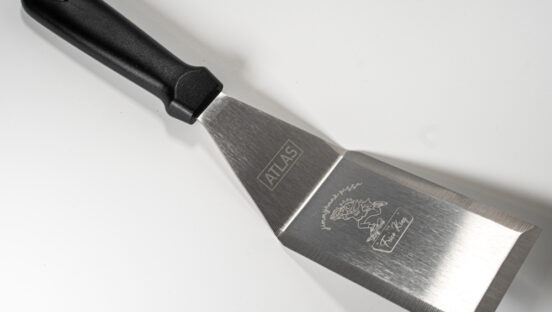The idea seemed simple enough: Build a case to confer landmark status to the location where Chicago-style deep-dish pizza was invented.
But as historian Tim Samuelson began to look into origins of the distinctive dish, he found himself mired in conflicting stories, each as impenetrable as the pizza and peopled with characters every bit as robust. There is almost no documentation about who invented the dish, and without it, legend has taken over.
The only paper trail indicates the pizza almost certainly came out of a 19th Century mansion built with lumber money at 29 E. Ohio St.—the restaurant now known as Pizzeria Uno. But the question of who exactly developed the concept remains a mystery despite the best efforts of the City of Chicago’s official cultural historian.
“I wish that there were more written records—recipes or vintage photographs,” lamented Samuelson.
“It’s an enigma, wrapped in a pie crust,” said Jeff Ruby, who co-authored “Everybody Loves Pizza” in 2005 with Penny Pollack.
What is known is that in 1943, Chicago produced a variation on pizzas. It has a coarse, crunchy crust, sauce on top of cheese and Italian sausage at its heart.
Nationally, pizza is a $30 billion industry, but it is especially popular in Chicago. Pizzeria Uno does $3.2 million of business a year, and its sibling, Pizzeria Due, does $3.4 million, neither delivers.
“What single food that hails from Chicago is as important as pizza?” said Marc Malnati, whose father, Lou, was a member of one of Chicago pizza’s first families.
Experts with the city and in the restaurant industry studiously avoid taking sides in the debate over its origins.
“We’re all very cautious, because we’re guaranteed the truth from everybody we talk to,” said food expert Judith Dunbar Hines of the Chicago Department of Cultural Affairs. “Whoever’s last standing gets to make the claim.”
In any case, Samuelson says he now has enough documentation to prove the pizza emerged from a restaurant that opened in the early 1940s in the mansion on East Ohio at Wabash, originally built by lumber baron Nathan Mears.
The founders of that pizzeria are the stuff of Chicago legend: Richard Novaretti, known as Ric Riccardo, the colorful owner of Riccardo’s Restaurant at Rush and Hubbard Streets; and his friend, Ike Sewell, a Chicago liquor distributor with a native Texan’s gregariousness.
By the 1940s and 1950s, phone books and city registers show tenants of the mansion included Riccardo, Lou Malnati’s father, Rudy Malnati Sr.—and a restaurant offering a dish called “pizza.”
Their restaurant opened in 1943 as The Pizzeria, became Pizzeria Riccardo soon afterward, and settled in as Pizzeria Uno in 1955, when the partners opened Pizzeria Due at Wabash and Ontario.
When Uno’s opened, there were other pizzerias, but this one served something distinctive: pizza thick as a sewer lid and almost as heavy.
Who developed the recipe remains unknown, despite efforts by Samuelson and others. It may have developed over time or been a collaboration. Samuelson and others tend to credit Riccardo with the impetus for the idea and Sewell with its fame.
But the story doesn’t end there. Samuelson interviewed Lou Malnati’s brother, Rudy Malnati Jr., who suggested that their father helped with Uno’s recipe.
Adolpho “Rudy” Malnati Sr. was the Ohio Street restaurant’s most loyal employee. Advertisements and news clippings of the time say he became manager of Pizzeria Riccardo in 1951, but clips also call him the restaurant’s co-owner and main operator.
But if Rudy Malnati Sr. had a hand in the pizza dough recipe, he never said so in interviews, and Samuelson couldn’t find documentation.
Over the years, employees of Uno and Due left to found some of Chicago’s most famous pizza houses: Uno’s cook Alice Mae Redmond at Gino’s East, Uno’s waitress Helen Delisi at Delisi’s Pizza, Due’s employee Louisa DeGenero at Louisa’s Pizza.
In 1955, Luciano “Lou” Malnati, was sent to manage the new Pizzeria Due. He later opened a restaurant in Lincolnwood, and his sons Marc and Rick now manage a chain of Lou Malnati’s restaurants.
His work done, Samuelson thinks Pizzerias Uno and Due deserve landmark status. “There’s also a fundamental truth behind my long-standing interest in this subject.”
What’s that? “I really like the pizza,” he said.












